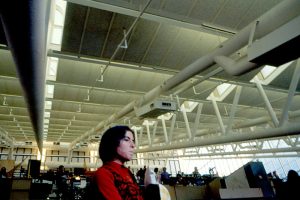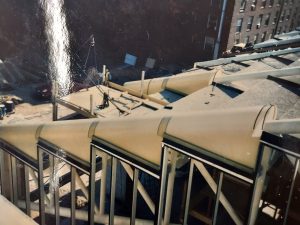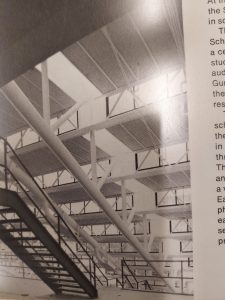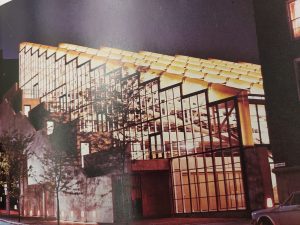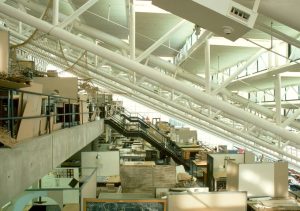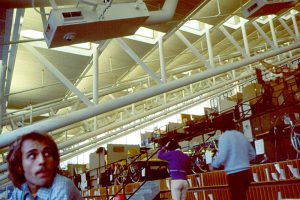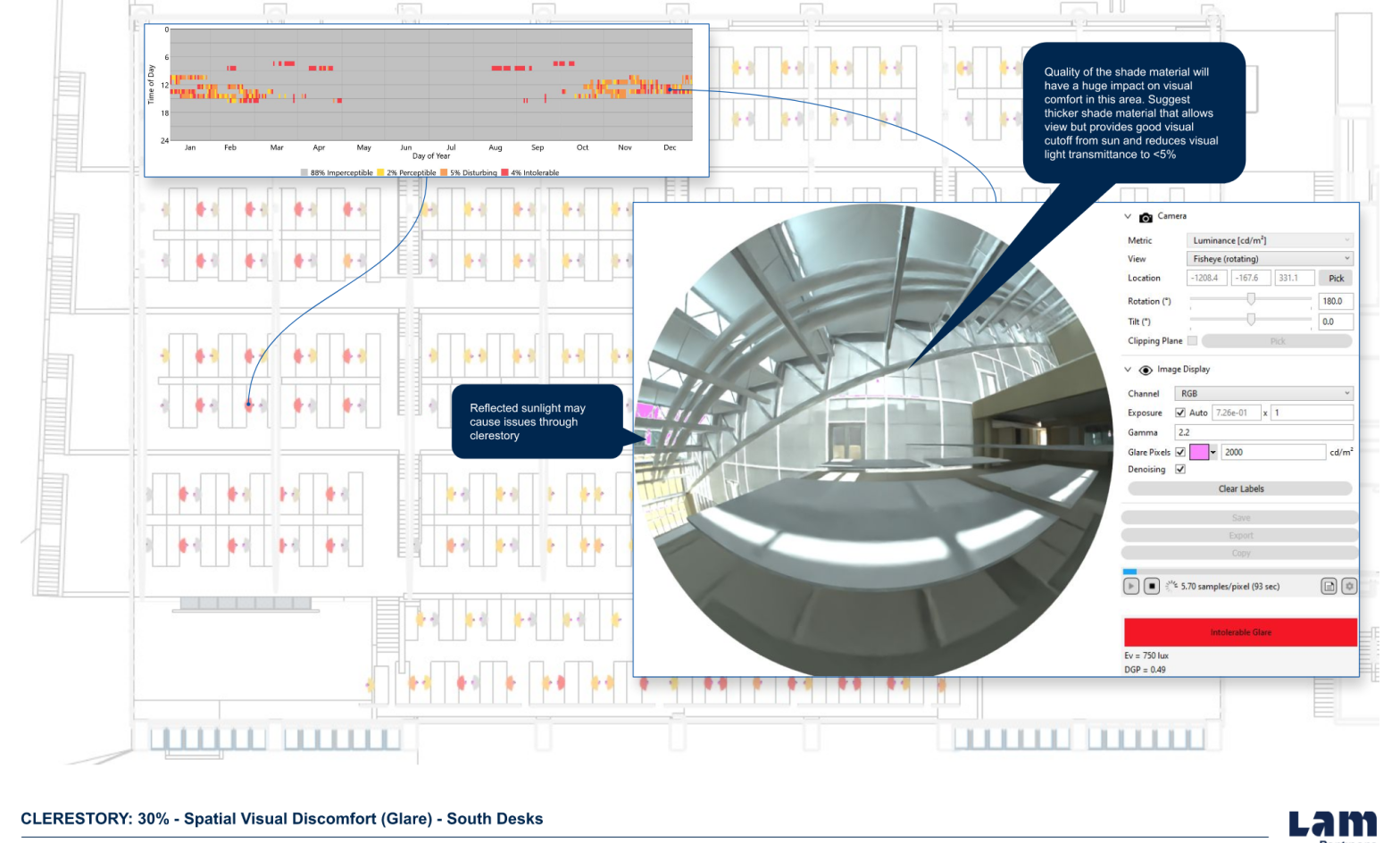
Sunlighting the Trays
Gund Hall Daylighting Case Study
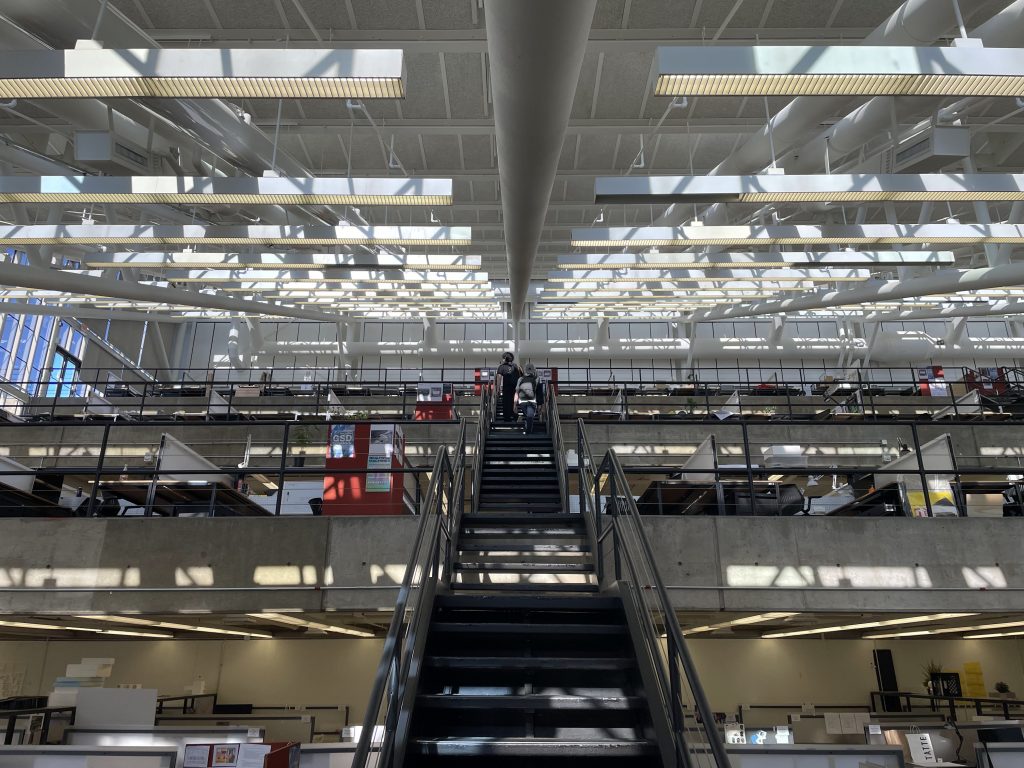
Between 2019-2024, Lam Partners has been involved in a range of lighting upgrades at Gund Hall, home of Harvard’s Graduate School of Design since 1972. These endeavors have included a building-wide assessment of installed electric lighting, updating the electric lighting design in the undertrays and ground floor classrooms, and daylighting studies for a major facade upgrade to the studio-adjacent glazing. This case study focuses on the daylighting studies developed by Lam Partners to support design decision-making for the studio (trays) facades, led by Bruner/Cott Architects and in collaboration with Vanderweil Engineers.
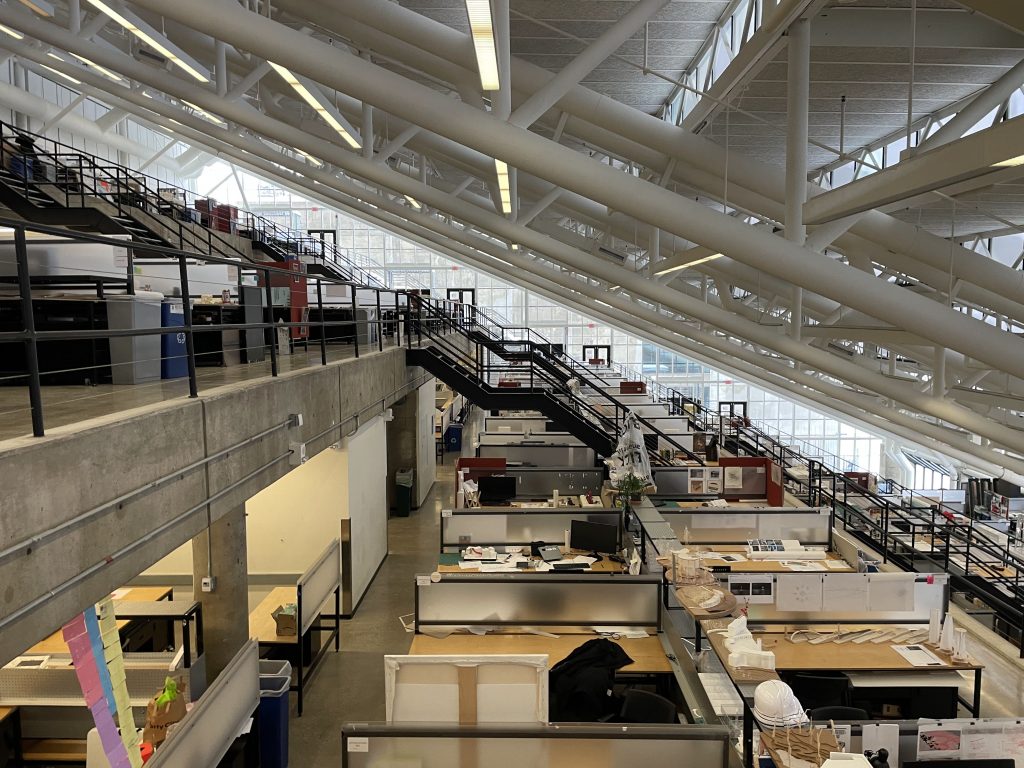
Existing Conditions
Access to daylight and views was clearly of high importance to John Andrews and Associates when designing Gund Hall, coupled with a then-popular “greenhouse” aesthetic for glazing including highly reflective glass, popularized by James Stirling in England. However, the technologies and typical practices at the time included the use of glazing with very low visual light transmission (VLT) to combat the negative impacts of heat gain. Consequently, while view access is good, daylight availability throughout the studio spaces is surprisingly limited, particularly in the under-tray areas which receive almost no sunlight.
An informal student survey confirmed what the design team understood intuitively – that daylight access suffers in most locations aside from the areas closest to the north, south, and east facades. Quality of the luminous environment plummets after dark, with a majority of students unhappy with the lighting at night. As such, the goals of this study focused on improving annual daylight autonomy through increased visual light transmission glazing where appropriate while managing visual comfort, as well as assessments of dynamic shading materials including both automated roller shades and electrochromic glazing technologies’, and their associated controls.
Original glazing visual light transmissions (VLT or Tvis) on the south facade and clerestory were quite low to limit solar gains. Clerestory glazing was replaced a decade after original installation due to water ingress, and with additional replacements in the subsequent decades, maintaining low VLTs between 10-13%.
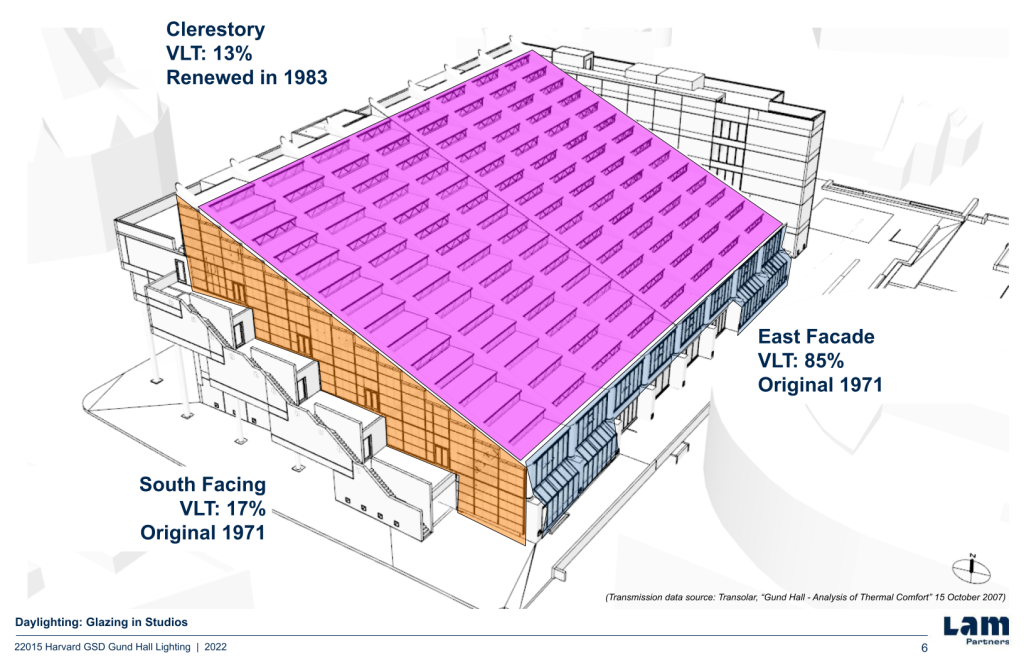
Baseline annual daylight availability assessment of current conditions revealed that although the interior appears to have daylight access, in fact a majority of the trays are well below the threshold of 50% Daylight Autonomy. Only about 20% of the studio space (including under-trays) is considered daylit according to this metric.
NOTE: All studies were developed using Solemma Climate Studio except where noted. Refer to the full report for material assignments, run settings, student survey results, electric lighting analysis, and further information.
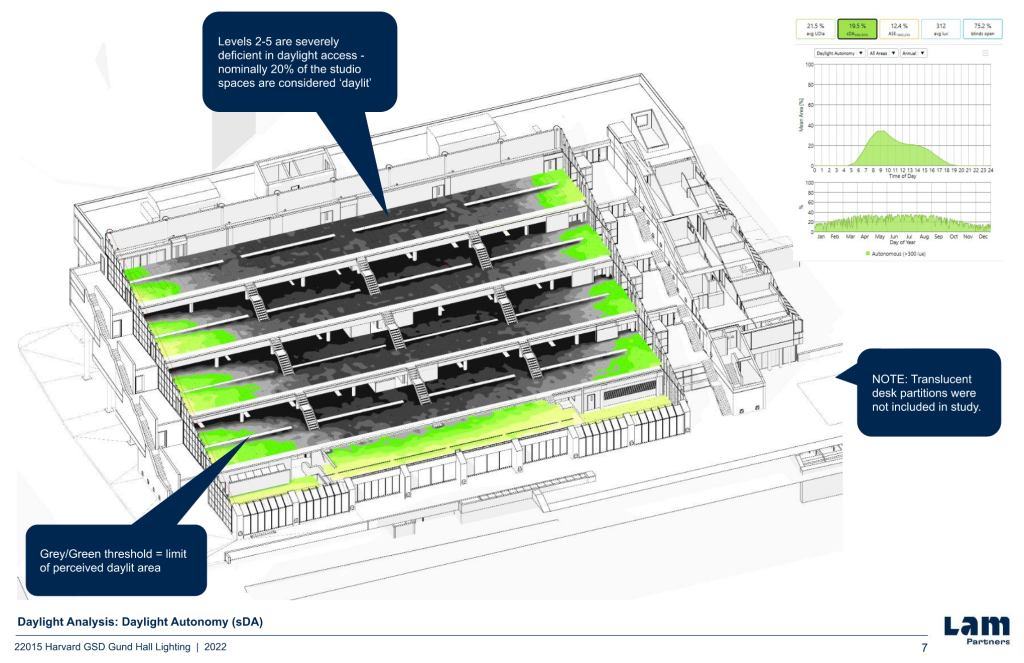
The Useful Daylight Illuminance (UDI) metric provides a bit further insight into the nuances of daylight availability showing that the middle zones of the trays receive supplementary daylight (dark green) throughout much of the year, with, acceptable daylight access in the early morning hours given the east-facing glazing orientation, but dropping off by mid-day as the sun shifts towards the west.
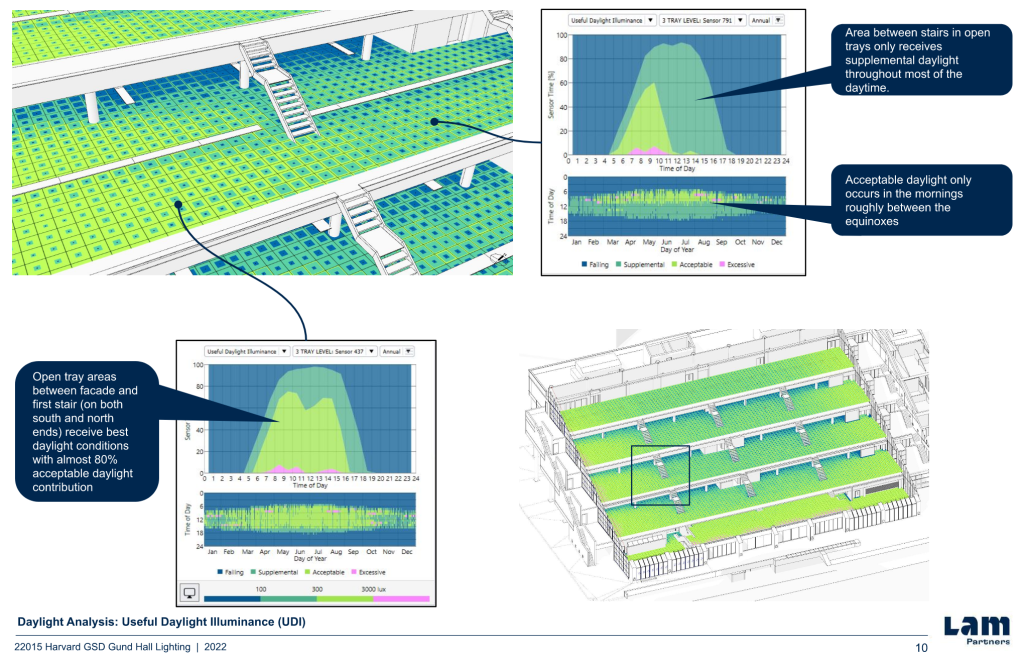
Although the UDI study did not show an abundance of excessive illuminances, the Annual sunlight exposure (ASE) assessment confirmed assumptions and supported student survey responses that zones closest to the south and east glazing received an overabundance of direct sunlight, requiring shades be closed for an extended period. This has negative consequences further into the studio space.

Looking more critically at the south facade, the below analysis assigned electrochromic glazing to the south facade with tint levels from 60%-1% to visualize the need for shading. Although electrochromic glazing was initially considered, its inability to shade direct sun even at the lowest tint levels made it inappropriate for the vertical glazing areas. However, the analysis allows visualization of shading needs with increased granularity compared to a single up/down material with binary positioning. Results show that the zone of glazing above the fifth floor requires the most shading due to its height above the building across Cambridge Street, as associated increased exposure.
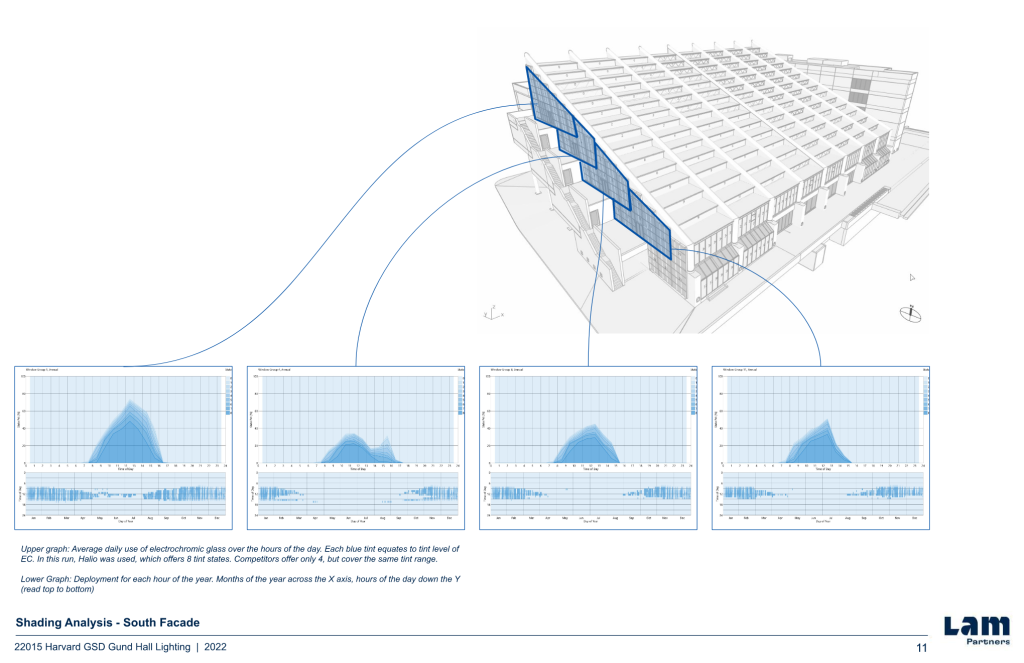
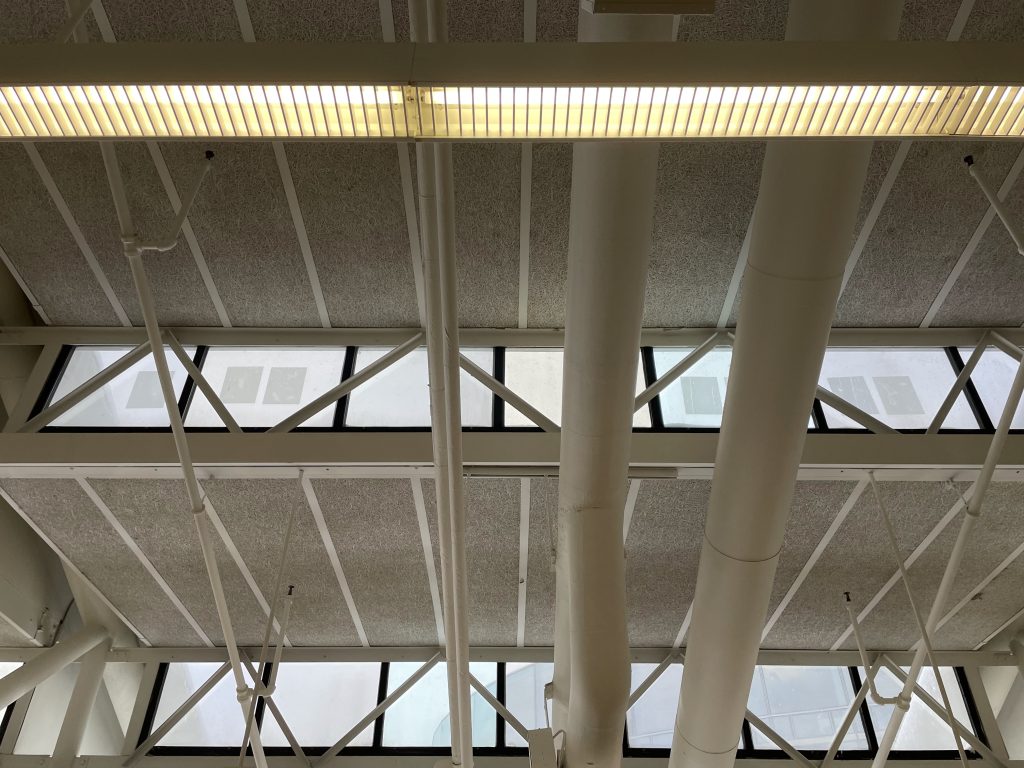
Clerestory Studies
As aforementioned, due to the low transmission glazing originally used in the clerestories to combat heat gain, the central tray spaces are only marginally more daylit than undertray spaces. Replacement with a higher VLT glazing with improved energy performance can drastically improve daylight access in the trays. Coupled with new dimmable electric lighting and automatic controls for daylight harvesting, this solution could also reduce electric lighting energy consumption during daylight hours compared to the current design.
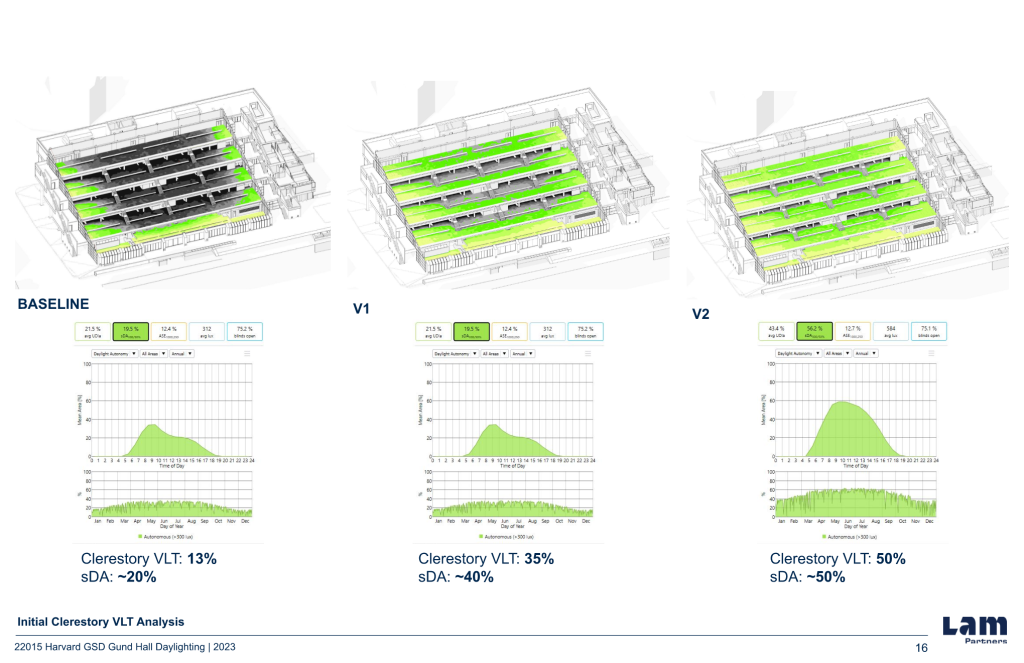
The clerestory windows lack shading to mitigate direct sunlight. This shading study indicated a potential need for dynamic shading on clear mornings year-round. Given the clerestory windows’ design, electrochromic glazing would be the sole feasible choice to reduce sunlight transmission. Nevertheless, because electrochromic glazing does not effectively shade direct sunlight, its inclusion was deemed unnecessary and cost-prohibitive. Moreover, due to minimal student activity during morning hours, shading the clerestories was deemed unnecessary and impractical. Instead, the clerestories celebrate the dynamic nature of daylight availability, dappling the studio trays in sunlight throughout the morning before providing even daylighting throughout the afternoon and evening daytime hours.
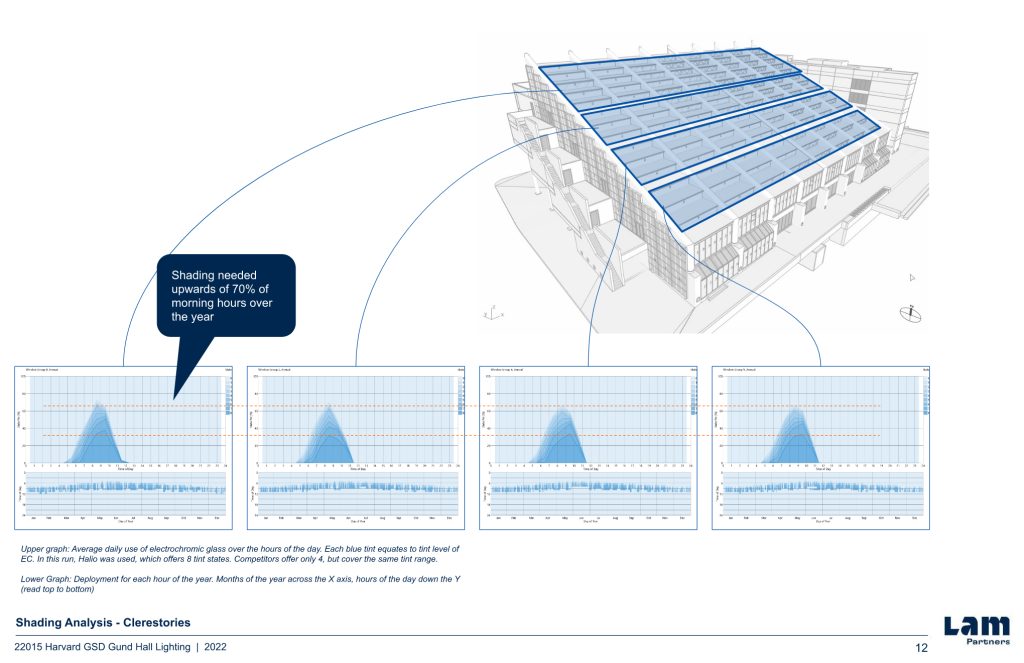
In a second round of analysis, three glazing VLTs were assessed to understand the sensitivity of daylight availability. Findings showed that VLT_30% would maximize daylight availability with available glazing products that also contain appropriate thermal performance qualities. The analysis and graph below shows the comparative sDA_300lux/50% for VLT_21%, 25%, and 30%. While all three exceed the thresholds commonly found in rating systems like LEED, it’s clear from the spatialization that the modest increase in VLT from 21% to 30% can make the difference of the middle tray areas receiving at least 50% DA, and even the undertrays achieving modest daylight availability. Improvement from VLT_25% to VLT_30% increases daylight availability by 5-10%, while improvement from VLT_21% to VLT_30% increases daylight availability by 11% (Level 5) to almost 25% (Level 3). The mezzanine experiences minimal variation because its main source of daylight comes from the glazing on the east facade.
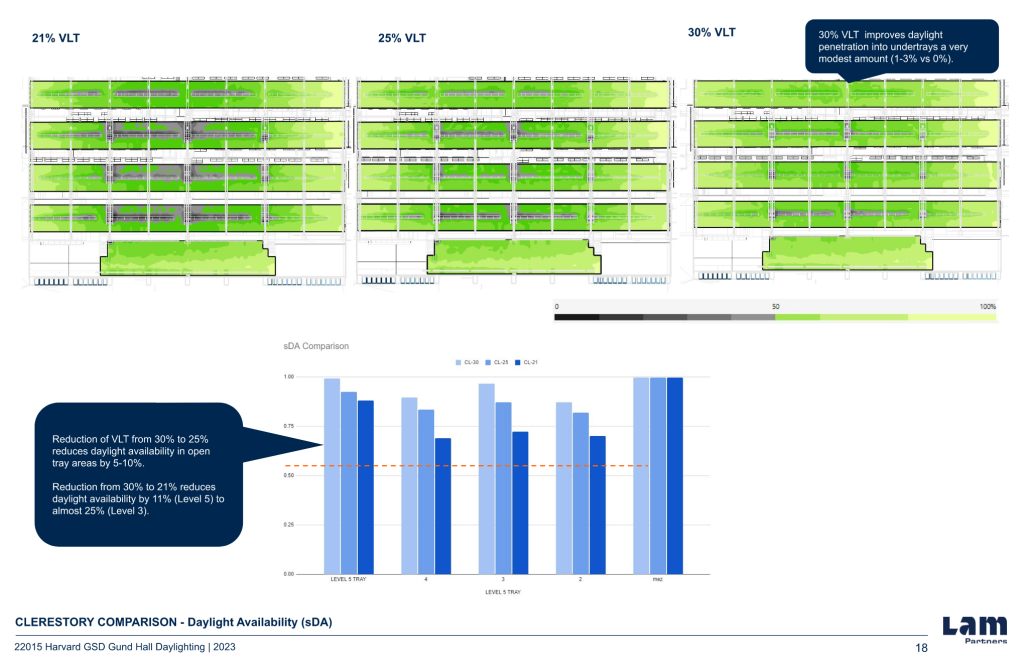
A view into the undertrays with VLT_30% clerestory glazing with the UDI metric shows modest solar penetration.
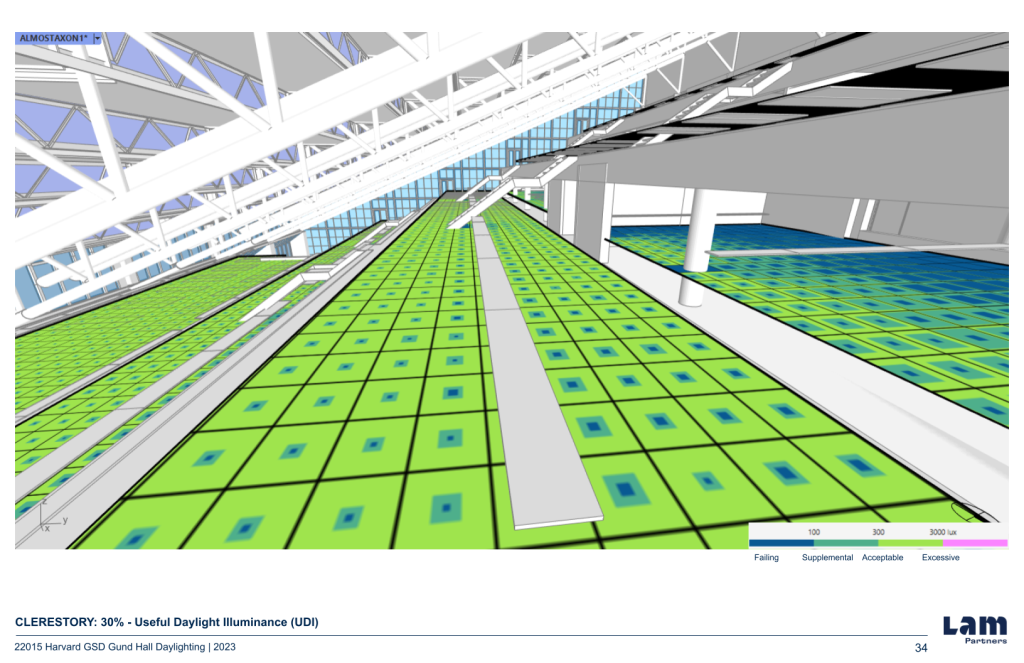
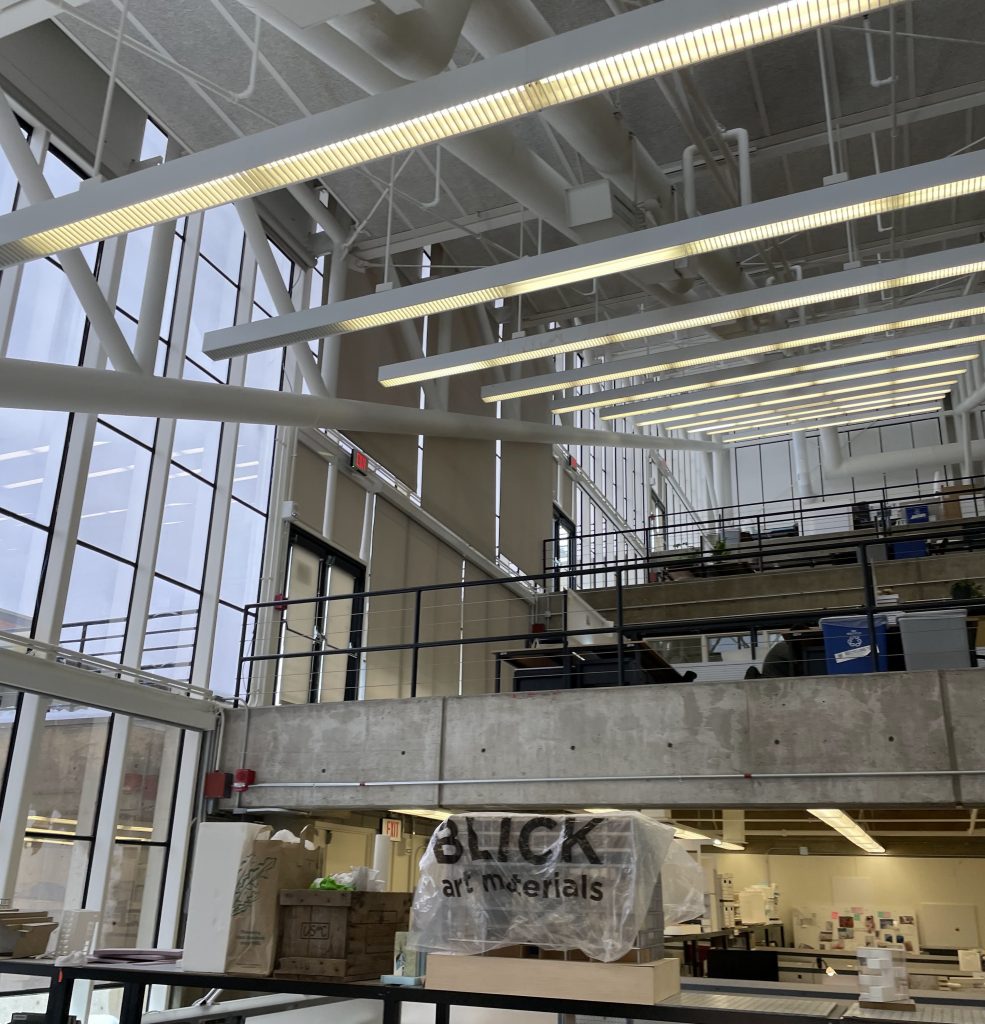
South (and North) Facade Studies
The south and north facades, containing large expenses of glazing, create the greatest potential for glare within the studio trays. Due to the importance of the aesthetic of the southern glazing from Cambridge St. maintaining similar reflectivity appearance was critical. However the facade also requires dynamic shades to manage glare and improve visual comfort. Early design proposals in collaboration with Bruner/Cott included exterior shading elements to be added to the building. However these ideas were rejected by the building committee due to the historic nature of the building.
In the analysis below, a spatial visual discomfort assessment was performed at each desk location with view locations associated to each workspace. The assessment follows student survey responses that students sitting facing the south windows within the first bay may experience glare at points throughout the day, and that fabric woven shades must be drawn for much of the time. The visualization shows the view experience for shades drawn during an early afternoon in December when sun penetration is most extreme.
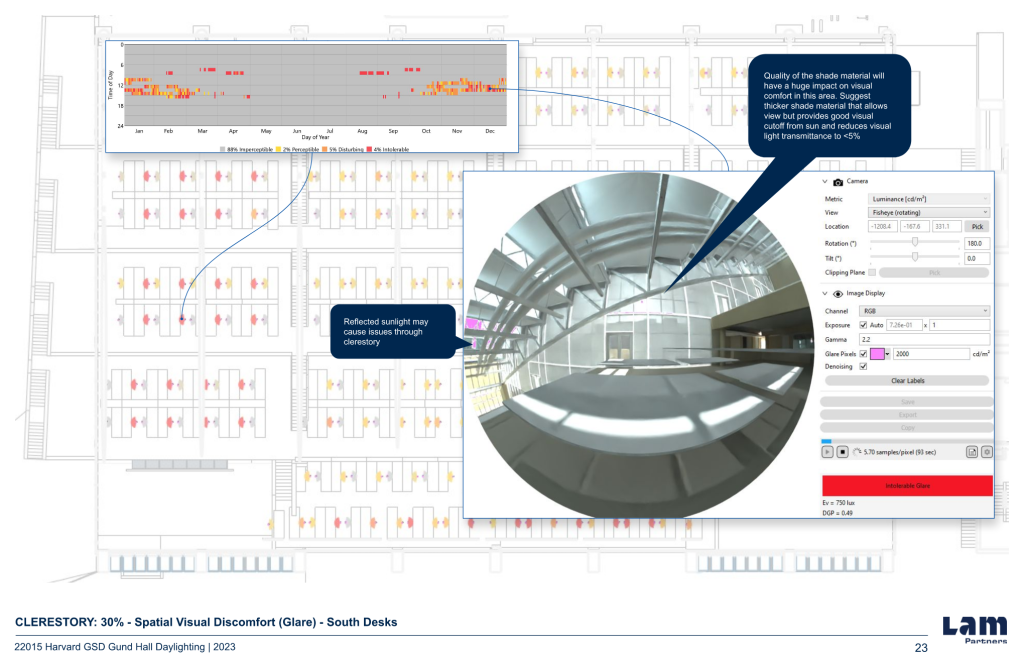
In the following study, various glazing transmissions were studied to determine if increasing the south glazing’s visual light transmission would provide positive improvements. While any direct sun penetration would need to be managed with shades regardless of transmission, results below show that the increase in transmission would accompany a commensurate increase in shading required to manage overlighting. While a modest increase in visual light transmission does not make a significant impact on either daylight availability or glare potential, a more significant increase to 44% could have adverse impacts. Note also that the previous sDA studies assumed a 17% VLT southern glazing spec, suggesting that increasing the VLT would not necessarily yield increased benefits.
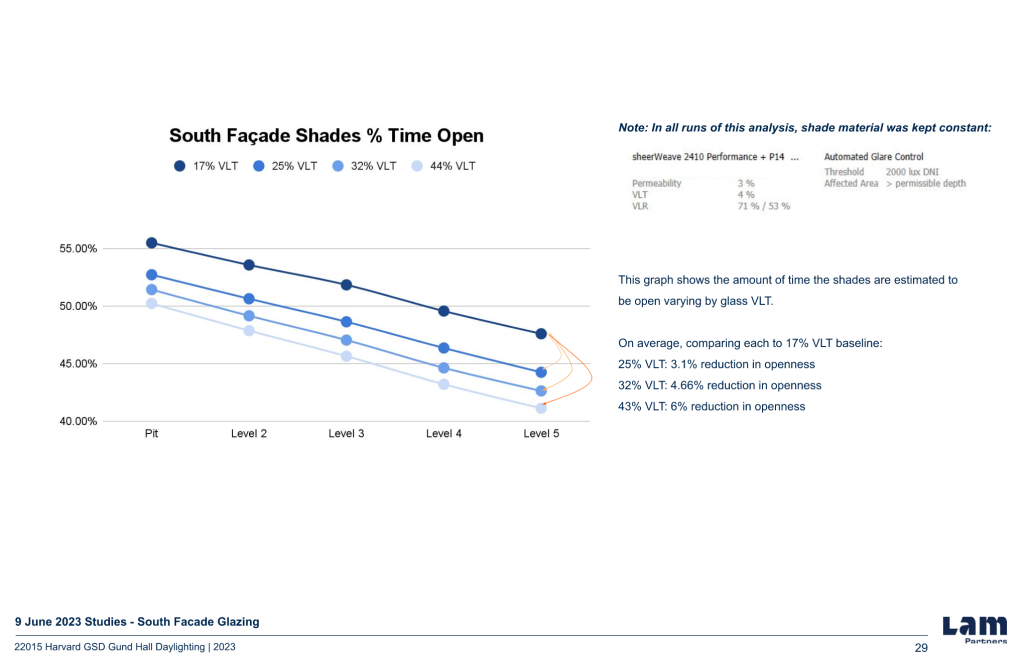
These studies use the technique of the ‘relative gradient’ to compare the baseline VLT_17% to the three higher VLT options. In the first analysis, a single point is assessed annually (3rd floor tray approximately 13’ in from the facade). These analysis show that while a modest increase in VLT would not negatively affect performance, the increase to VLT_44% would significantly increase illuminance levels, particularly in the summer during the school’s summer discovery programs, which could create increased glare.
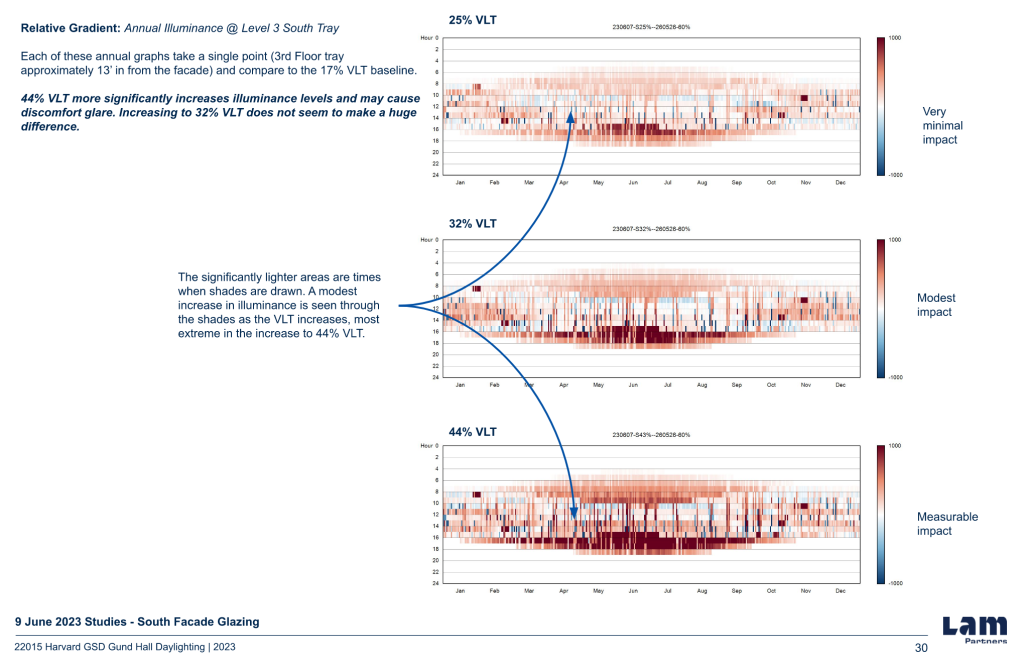
In this associated study, the relative gradient was used to compare the VLT_17% baseline to the three alternates looking at excessive illuminance as a subset of the Useful Daylight Illuminance metric. Here, red areas show an increase in excessive illuminance throughout the year, compared to the baseline. While the red appears extreme, in fact the scale of 10% suggests that the differences are not huge.
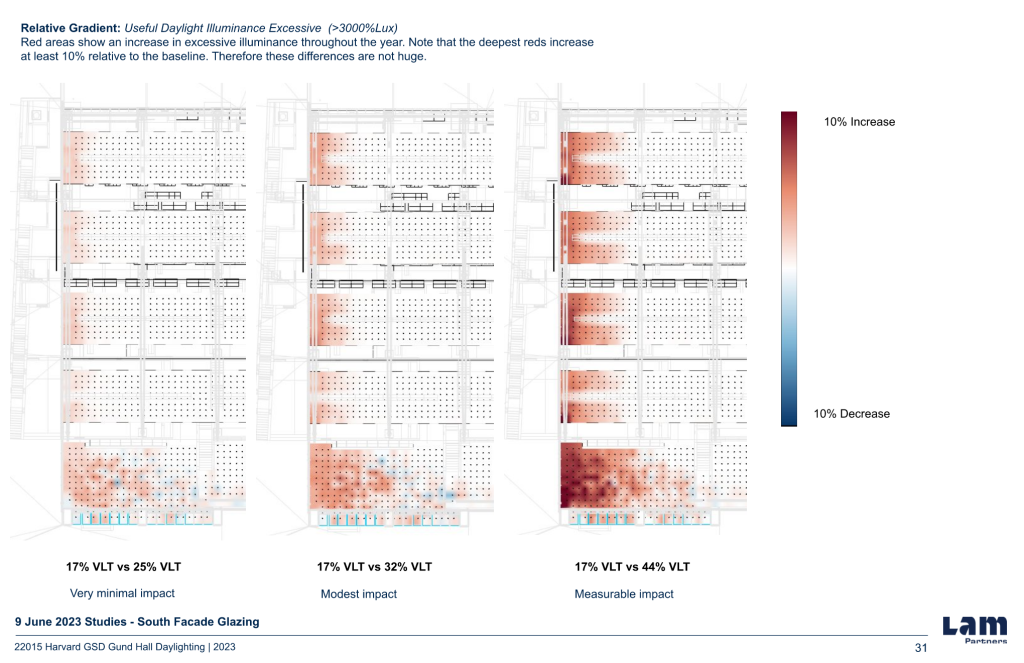
Although the above studies show that a modest increase in VLT would not have adverse impacts, it was ultimately determined to maintain the target of 17% VLT, in part due to maintaining the aesthetic appearance of the glass, and due to the increase not substantially improving daylight access throughout the studios at large.
Since the framing system had originally been designed around a single glazing unit, in order to meet the improved energy efficiency targets, the design team selected vacuum insulated glazing (VIG) for the south and north facades, allowing for a low U-factor in a thin composition. A range of glazings were assessed through samples and a mockup coordinated by Bruner/Cott, in collaboration with Lam Partners, and Vanderweil for energy assessment.
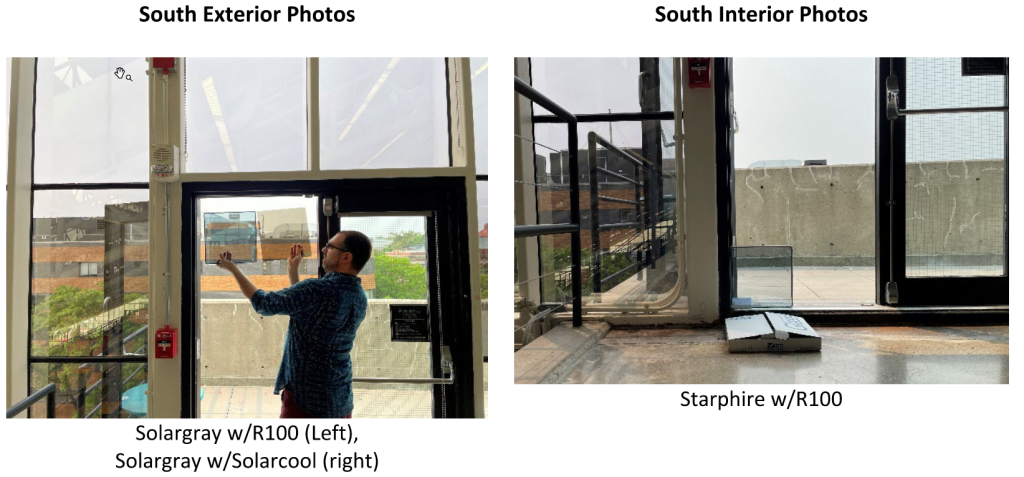
For the north facade, we aimed for a similar exterior aesthetic but with low reflectivity, opting for a higher VLT_50% target. The presence of a large concrete wall on this facade acts as a daylight reflector, contributing to glare issues particularly in the upper trays. However, these glare concerns are most pronounced during the summer months when these areas are typically unoccupied.
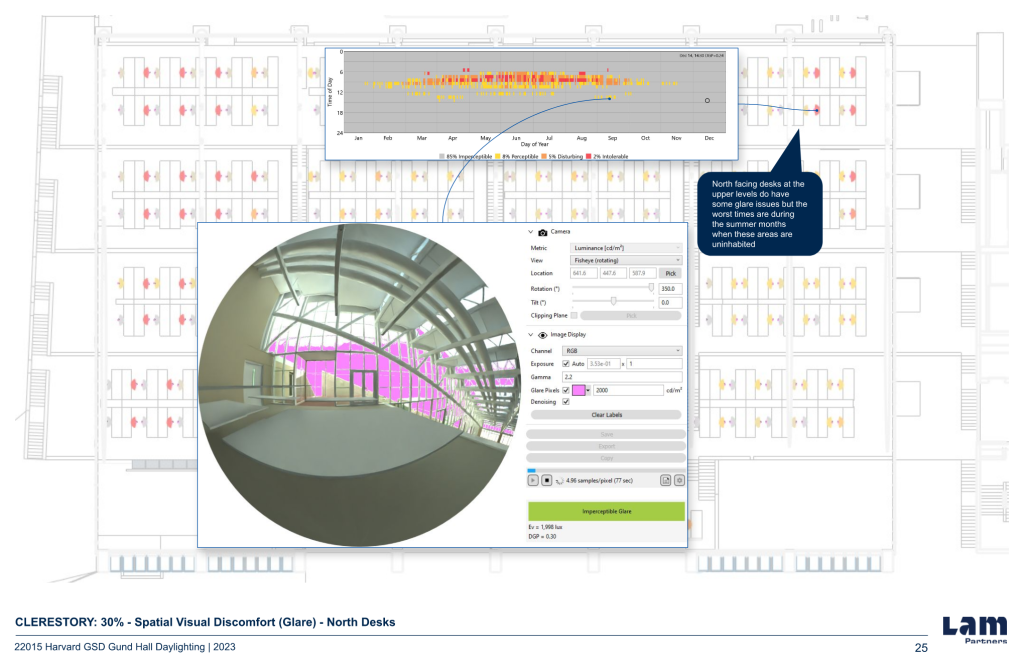
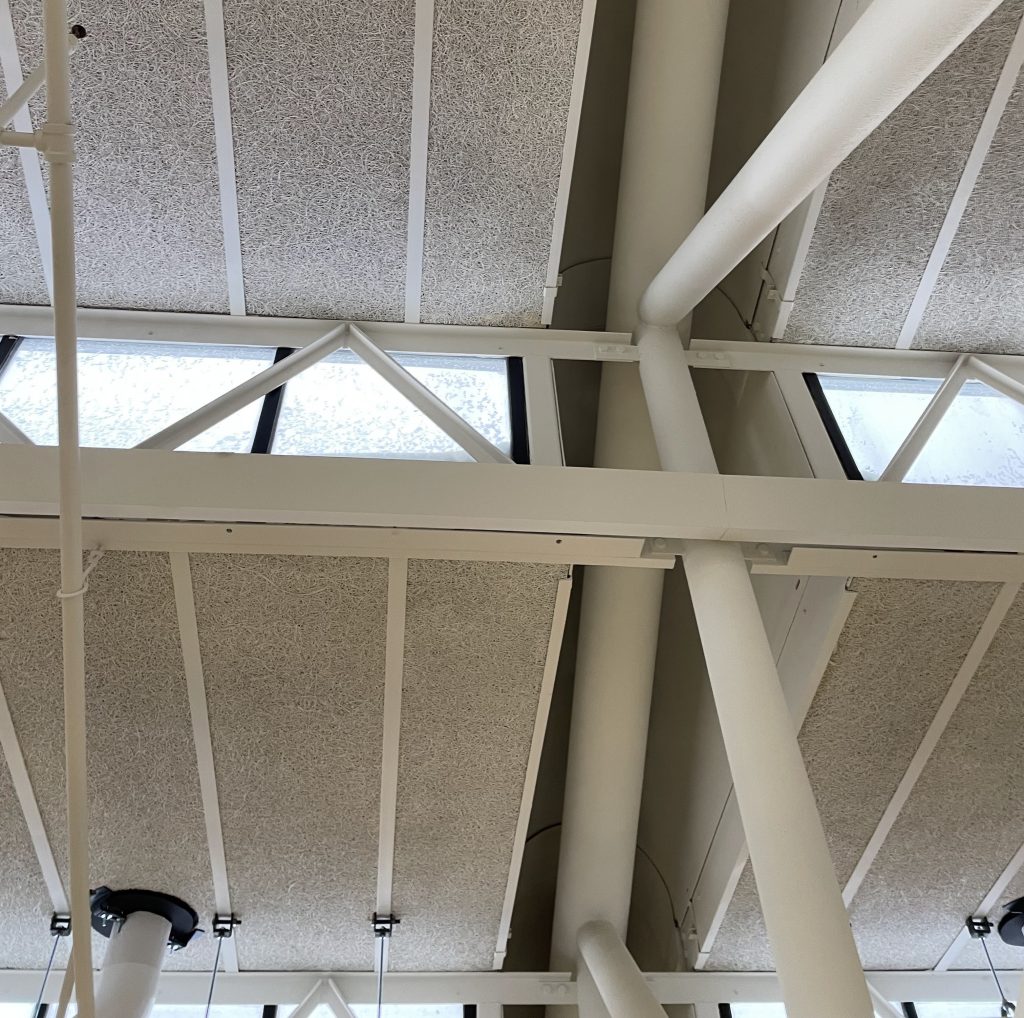
Truss Covers
In the original design for Gund Hall, the truss covers were formed of translucent fiberglass elements, as seen in early photographs:
However due to the poor thermal management of these elements, the truss covers were covered and insulated in the 1983 building upgrades. It was desirable by the design team to assess if returning this design solution back to the original would be feasible, and if so, what the measurable impact would be. While the aesthetic implications are undeniable, the daylight performance improvements are minimal, while the thermal impacts could be significant and negative, unless the truss covers were replaced with a newly engineered material solution that could come at significant cost. Alternatively, adding electric light within the truss cover zone was studied, however the minimal space allotment would make the detail hard to execute in an aesthetically pleasing way. Ultimately it was decided not to pursue any additional lighting detailing at the truss covers.
Conclusion
The daylight studies presented here of Gund Hall illustrate the opportunities latent within mid-century architecture for improvements to energy performance and daylight availability while maintaining the aesthetic integrity of the original Architecture. This building, contentious from inception, and perpetually with environmental shortcomings, is in the process now of adapting to a chancing climate to stand the test of time.
Acknowledgements
This study was undertaken in collaboration with Bruner/Cott Architects, in charge of this significant facade and systems renovation at Gund Hall. In particular, collaborators included Henry Moss, Adrienne Cali, George Gard, as well as Patrick Murphy at Vanderwiel engineers, and Peter Darlow of Darlow Christ Architects.
Many current and former faculty and students of Harvard Graduate School of Design that have contributed to the fields of lighting and building performance, often have used Gund Hall as an example space for their studies. As such, this report, and the studies contained within, would not have been possible without the work of key colleagues, friends, and mentors, including: Christoph Reinhart, Holly Samuelson, Jon Sargent, Kera Lagios, Jeff Niemasz, Alstan Jakubiec, Tarek Rakha, Azadeh Omidfar Sawyer, and Timur Dogan. Thank you all.
For the complete study as well as electric lighting analysis and studies, Refer to the full report.
